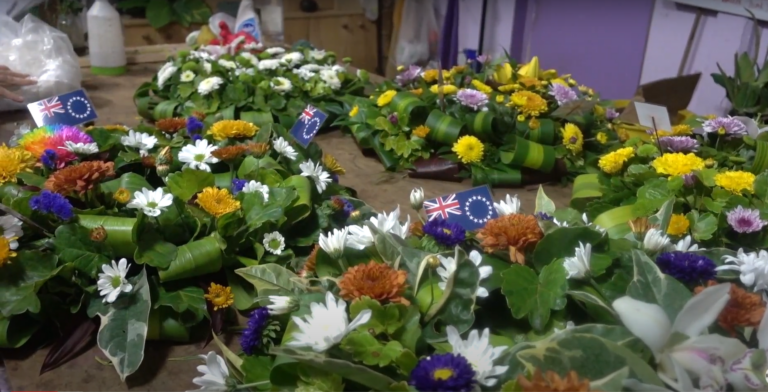
Celebrate Birthdays with Island Craft’s Vibrant Birthday Packages in Rarotonga and Pa Enua
Birthdays are a time to celebrate with love and joy, and a beautifully crafted bouquet
in NZD dollars via ANZ
and Pa Enaua
Order and pay online
Around Rarotonga Order before 1pm
The second type of human figure is larger than the fisherman’s god and bears three small human figures on its breast. The head is large with well-flanged eyes, notched mouth, an ear of the same form as those of the fisherman’s god, but the head and face are narrower in proportion to height. A new element is the well-shaped nose with carved nostrils. A long, well-shaped neck separates the jaw line from the shoulders, and the upper shoulder line is carried across the back as a straight edge.
Two projecting breasts are high up on the chest, and the three small figures in full face appear below them, the middle figure being in the mesial line. The abdomen is large and protruding with a circular raised navel pitted in its center. The upper arm is long and vertical, free form the chest, and is carved with full-face human figures on its outer surface. The hand is large, four-fingered, and flexed onto the side of the abdomen with no distinctive forearm. The gluteal region projects outward at a marked angle with the body and is comparatively short. The long legs are flexed on short thighs, and the feet form solid blocks which are notched on front and sides. The phallus is present with a well-marked glans.
The image is made of ironwood and has a fine polish. Its greater height gives it a slenderer appearance than the fisherman’s god, yet they have certain elements in common. The general shape of the head and the technique of the eyes, mouth, and ears is identical. The continuation of the jaw line across the back and the straight shoulder line across the back are similar and the resultant neck differs merely in length.
The arm and hand technique are similar, but utilization of the outer surface of the arm for carving human figures has led to the flexion being near the wrist. The protruding abdomen, circular navel, shallow gluteal region, flexed thighs and legs with solid rectangular feet are present in both types, but the notches in the fisherman’s god have undergone less elaboration. The characteristics penis with large glans is present in both.
Elaboration has taken place in the longer neck, the definite nose with well-defined nostrils, and the addition of secondary figures. The secondary figures are of two types; breast figures carved in the round and arm figures carved on the flat. In both forms the artist’s field is restricted in area, and the details of technique established on larger figures were difficult to produce on the smaller figures. The result has been the natural elimination of some details that would have required more space than was available. Thus, while the characteristic eye pattern was observed, the brow element was omitted in both types.
The full mouth patterns consist of four curved notches, but in the breast figures one notch was omitted and in the arm figures two were omitted. The ears offered no problem, and in the arm figures they are exceptionally large to balance the rectangular panel that forms the field of the figure. In the breast figures the large protruding abdomen is maintained because the figure is carved in the round, but in the flat arm figure the abdomen is represented by a knob.
The upper limbs lose details as to forearm and hand in both types and are represented by raised ridges, which are separated in the round figure, owing to distance, but run together in the flat figure. The lower limbs in the round figure are capable of following the flexed pattern, but the feet are left out.
The angular notches associated with the feet of larger figures are included on the lower edged of the flexed leg. In the flat figure the flexed limb pattern becomes flattened out with the knee angle toward the middle line, and neither feet nor notches are present. Thus, extreme conventionalization occurs in the smaller figures influenced primarily, no doubt, by the limitations of space but also affected by an artist’s ideas of values. A secondary figure is an ornamental detail and does not need the elaboration of the main figure.
The London Missionary Society catalog merely describes the figure in general terms but adds “From Rarotonga”. In pencil on an old label are the words, “Te Rongo and his three sons from Rarotonga.” While the allocation to Rarotonga is undoubtedly correct, the identification as Te Rongo and his three sons maybe due to identifying the Mangaian god Rongo with the Rarotongan god Te Rongo. The Mangaian god Rongo was the father of the three ancestors of the Ngariki tribe but there is no record that the Rarotongan god Te Rongo had three sons.
share this :

Birthdays are a time to celebrate with love and joy, and a beautifully crafted bouquet

Each year on April 25, the Cook Islands join Australia and New Zealand in commemorating